Microsoft Excel is a program designed for the Windows operating system. Its main purpose is to create tables and work with them. The spreadsheet editor has a wide functionality and allows you to facilitate operations with a large array of numbers.
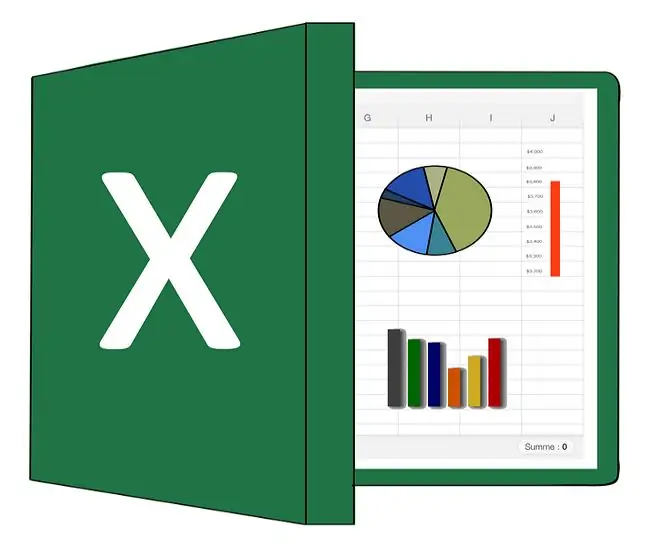
Excel has the ability to create formulas of varying complexity: from the simplest to macros. This will facilitate the work of not only a specialist, but also an ordinary user.
Addition
To add several numbers in a column, you can use the "auto-sum" function (∑ icon). Place the cursor on the area where the amount should be.
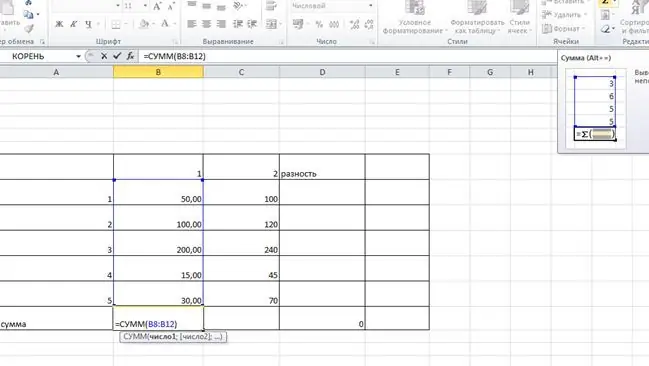
Find the ∑ sign, click on it, press "Enter". The amount has been calculated.
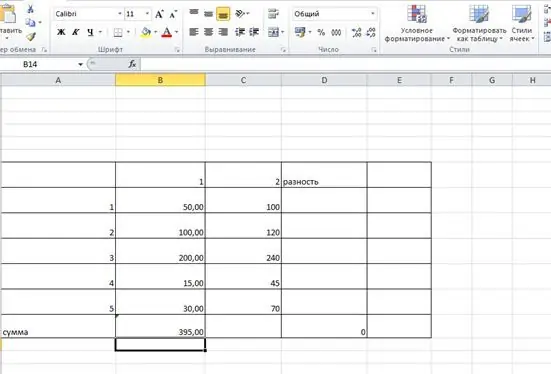
To add several values, you can do it differently. We put the equal sign, click with the mouse one by one on the values that we need to add.
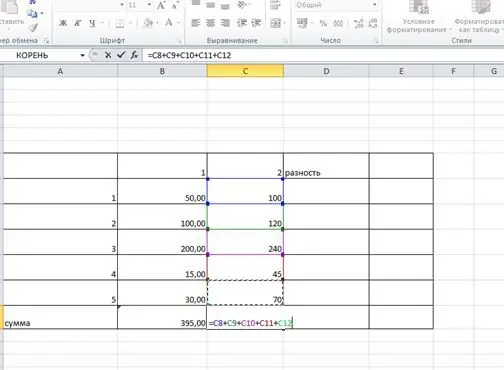
We put a plus sign between the values, press Enter.
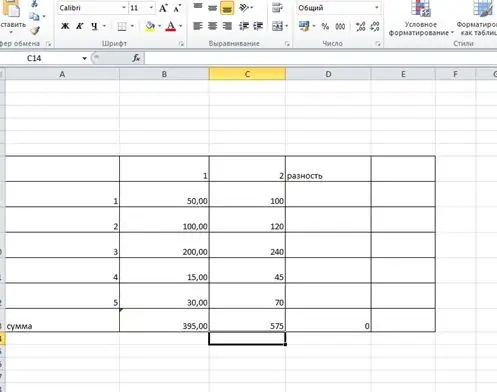
This is how we added the values of two columns in one table differently.
Subtraction
To create a subtraction formula, proceed in the same way. Place the cursor on the cell where the difference of numbers will be, click "equal". Next, with the mouse, first mark the decrement, then put the "minus", mark the subtracted and click "Enter".

The resulting value is "stretched" over the entire column. To do this, move the cursor to the lower right corner of the desired area so that a cross appears, press the left mouse button and drag it down.

Now the difference in numbers has been calculated in the entire column.
Multiplication
To multiply numbers in Excel, you need to do this. In the cell with the total we put the “=” sign, with the mouse mark the multipliers in turn, dividing them with the “*” sign, press “Enter”.
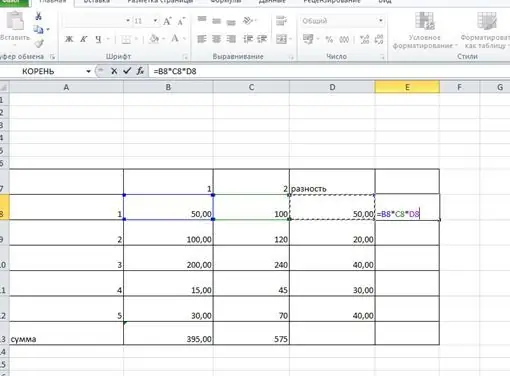
There can be any number of multipliers. If all factors are in one line, then the expression can be "stretched" over the entire column.
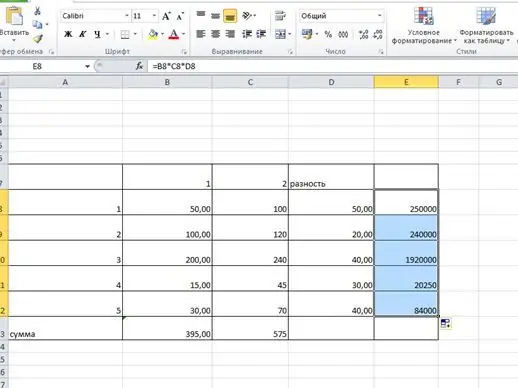
To multiply a column of numbers by a constant number, you need to do this. Place a constant number in an empty cell. We put the cursor on the area with the future result, we do the rest by analogy with the previous option.
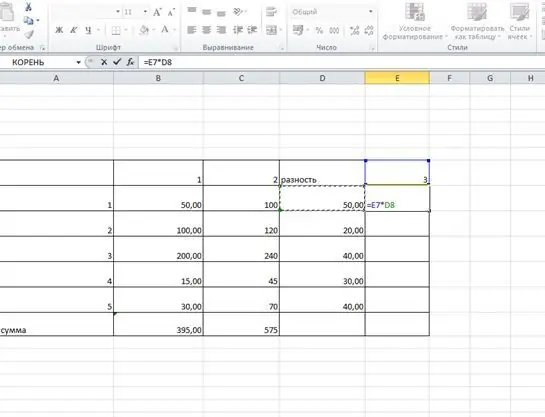
The resulting literal expression is correct for this area.
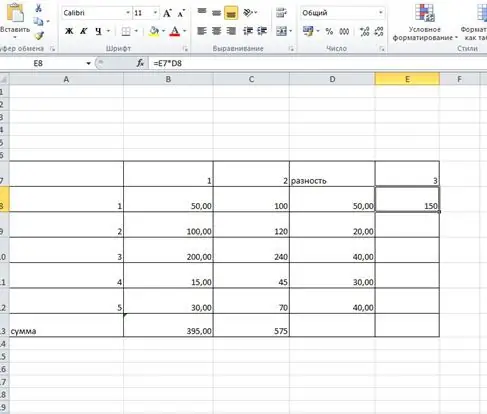
But if we "stretch" the formula, as we did earlier, then it will "go astray." The program will take into account the number from the next cell as a constant.
In order for the program to "know" that the number must always be taken from a certain area, it is necessary to make changes to the original record. In our case, the value with a constant is denoted as E7. We go into the line of formulas and add before E and before 7 the symbol "$", press "enter".
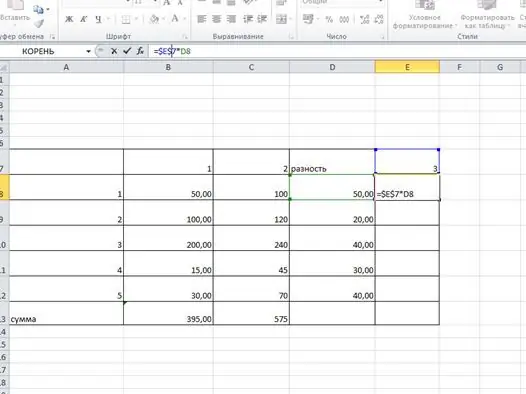
Now the formula can be stretched across the entire column.
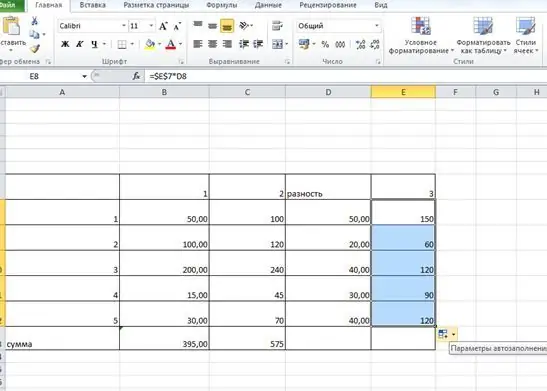
We see that in each cell of the column, the first factor is the number from cell E7.
Division
Now let's divide column E by column D (just check if we multiplied correctly by a constant).
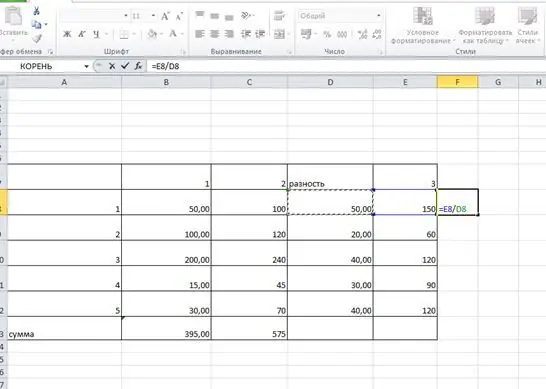
We put the cursor in the cell with the future value, press “equal”, mark E8 and D8, put the division sign “/” between them, press “Enter”, “stretch” the resulting expression.

Division by a constant is done in the same way as in the case of multiplication.
These are the simplest formulas that might come in handy first. Exel provides tremendous opportunities for creating more complex tasks. The control panel has a "Formulas" section.

In it, you can select the value that you need. This is how it works. We put the cursor in an empty cell, go to the "Formulas" section, select the "Mathematical" tab.
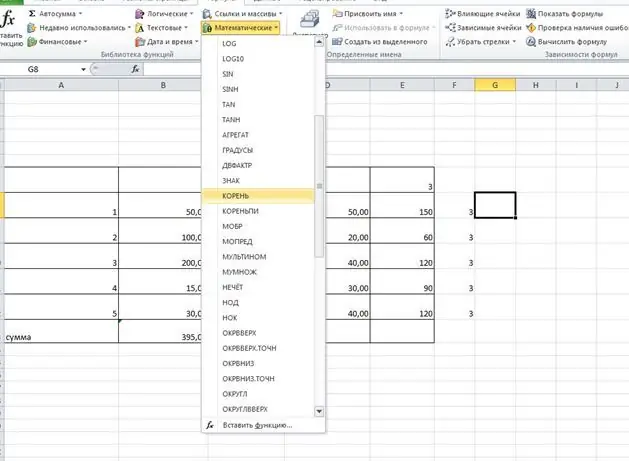
Let's try, for example, to apply the value "root".
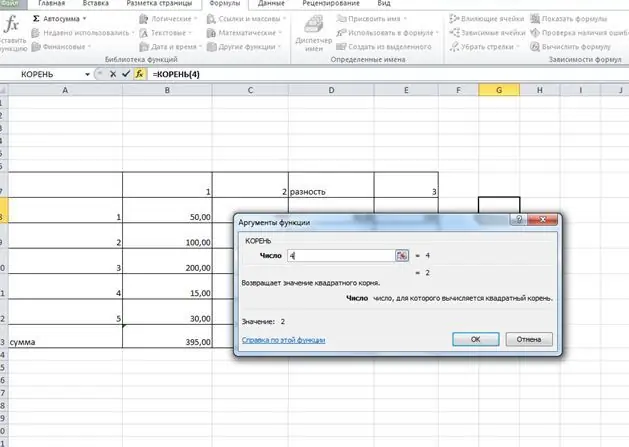
Let's calculate the root of 4. That's right: the root of four is equal to two.

We create other formulas in the same way. The task is quite within the power of anyone, you just need to figure it out.






